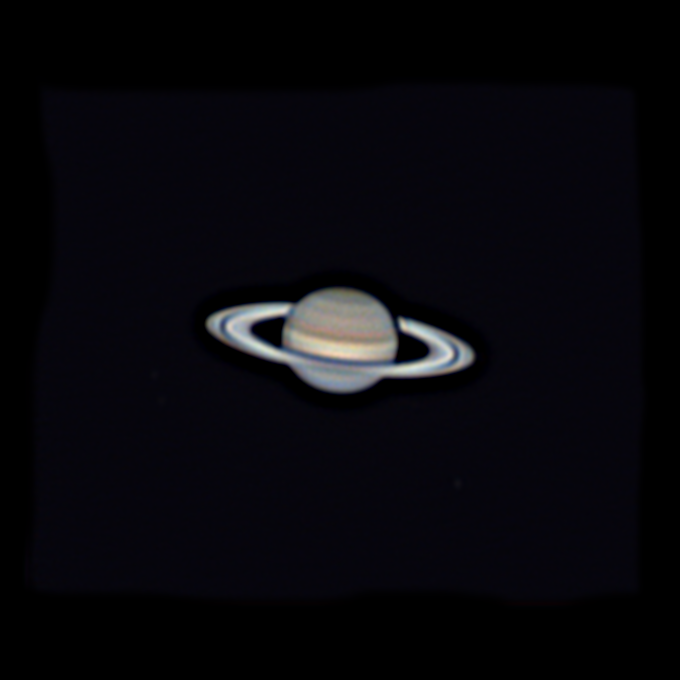Amateur Astrophotography
Skywatcher Skymax Maksutov-Cassegrain f = 1500mm / D=127mm F12 SynScan AZ GOTO
Skywatcher Skyhawk Newtonian f= 500mm (450mm) / D=114mm F4
Skywatcher Explorer 130PDS Newtonian, f=650mm / D=130mm F5 with Skywatcher Mount EQ5 Pro SynScan GoTo
2020
Saturn shows such beautiful, peaceful images. Please enjoy the best image I got so far on September 12, 20h 11 min UTC. The free software used for processing: Autostakkert 3 (to get stacked image), Registax 6 (wavelets), and GIMP (final processing). Stock 2X Skywatcher Barlow was used. Can you enjoy Cassini division? And the basic structure of Saturn's atmosphere?

2022
Saturn, what a feeling of tranquility and harmony conveys to me the image of this planet. We will have it in opposition on August 14, so there is only a month and a few days left. Saturn is lower on the horizon and dimmer than Jupiter, so it costs more to get good images.
On July 10th I used the Skywatcher Maksutov 127/1500 F12 telescope, Skywatcher Eq5 pro SynScan goto mount and the Celestron RisingTech G3M385 planetary camera, with Sony IMX385 sensor, UV/IR filter and Barlow 2X X-Cel LX. The images were processed using Autostakkert, Fitswork and Registax and Gimp. The final result follows:
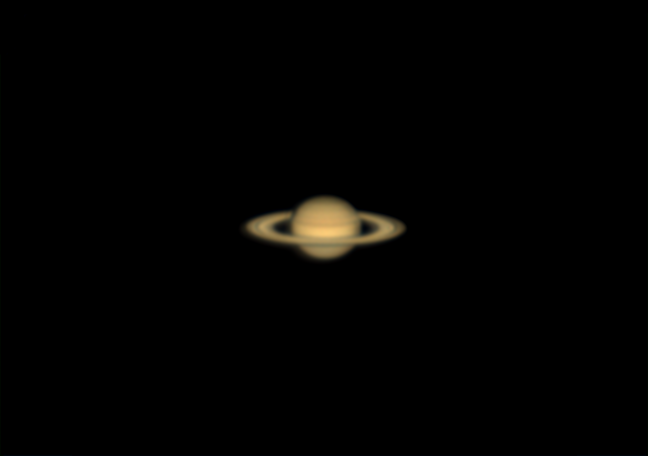
On 14th new images were obtained and this time the white balance was probably better, allowing to see differences in color in the bands of clouds.

Quiet Saturn floating through space on the 6th of August 2022. Notice your rings with the Cassini and Encke divisions. Enjoy those bands of clouds of different colors. Saturn is barely more than 30 degrees above the horizon at the observing site, so this is what it is. We are already close to opposition, on the 14th. Do not forget to take a look at it, this planet is special, it has a touch of elegance and balance that distinguishes it from the others.
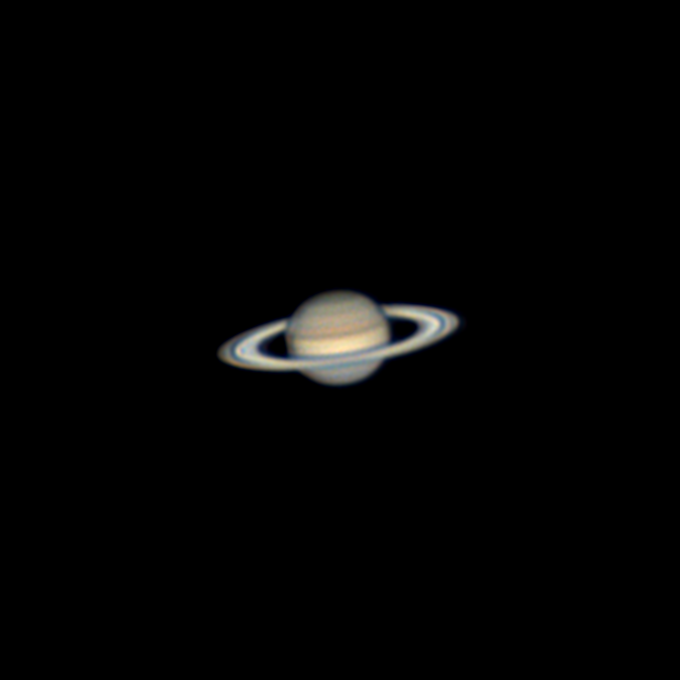
During the days around the time of opposition, Saturn's rings suddenly intensify their apparent brightness. German astronomer Hugo von Seeliger (1849-1924) first noted this change in 1887, concluding that the only plausible explanation was that Saturn's rings were made of tiny particles. Therefore, this effect bears his name. In the photographs, if we compare the brightness of the rings with the brightness of the planet, we see that the image of the 13th shows much brighter rings (the opposition occurred exactly the next day, August 14).
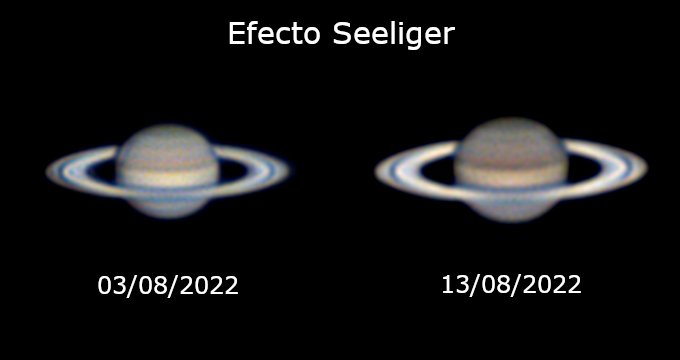
Saturn on August 20, quietly continues its path across the sky.
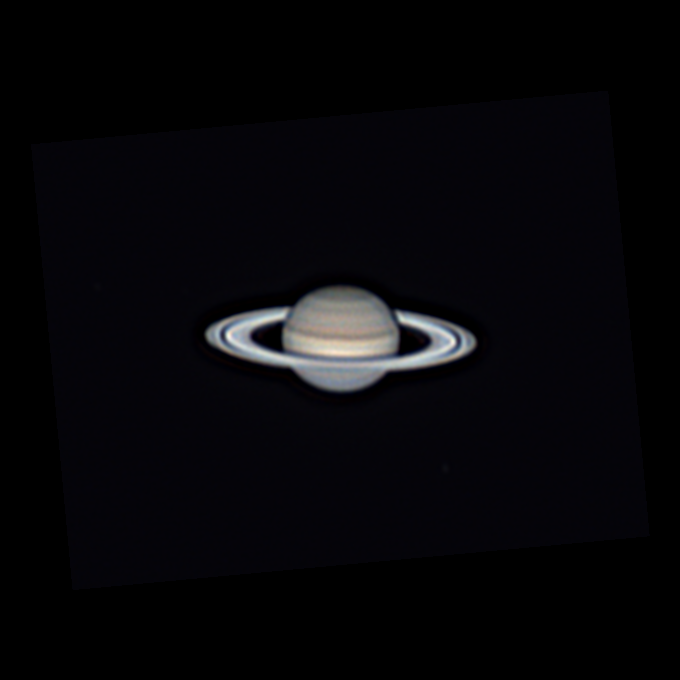
On August 24th it was located 1.327 million km away. Far from home. Its light took an hour and a quarter to arrive. And a tiny part of that light entered my Mak 127/1500 and was absorbed by an IMX385 sensor. And the miracle happened and a beautiful image appeared.
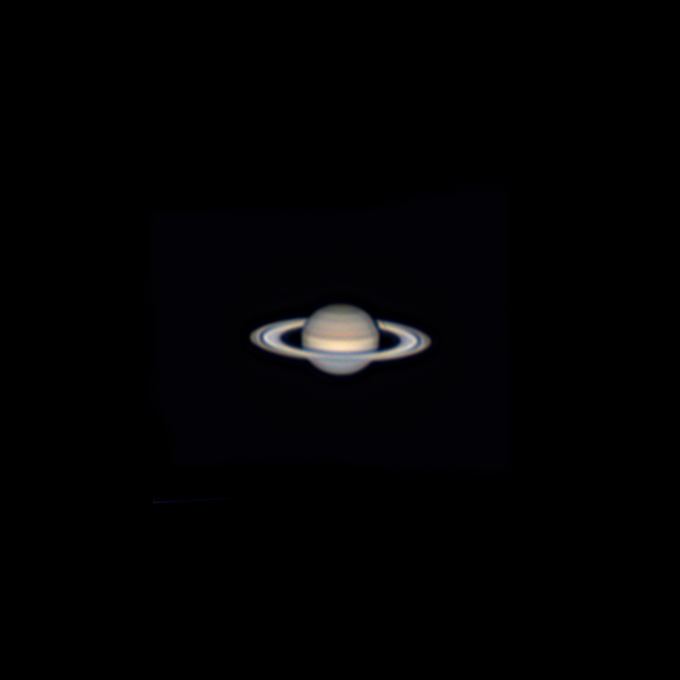
Saturn! Why do you always go so low on the horizon? Why don't you come up a little higher so we can get a better look at you? Do like Jupiter, 50º above the horizon. He sure knows! Maybe next year? We will see... Early morning of August 29.
